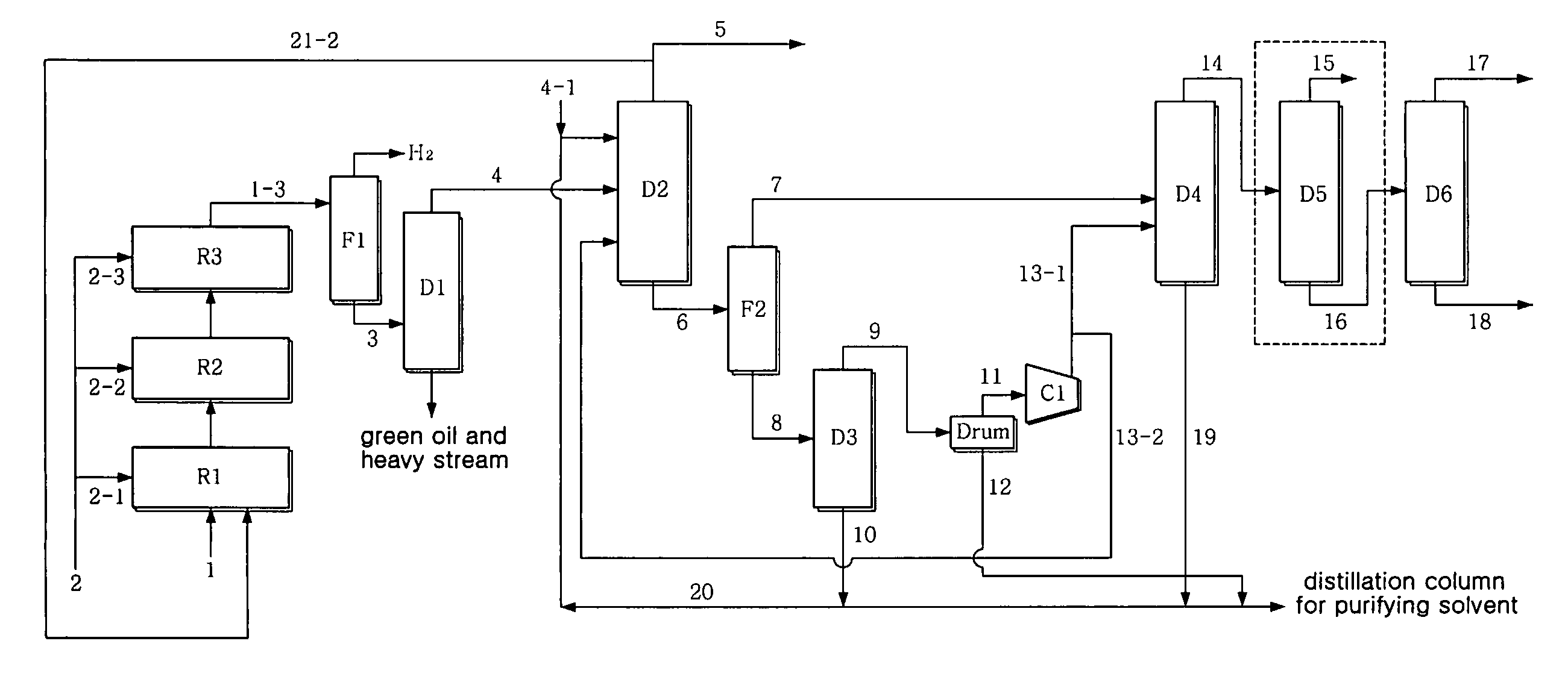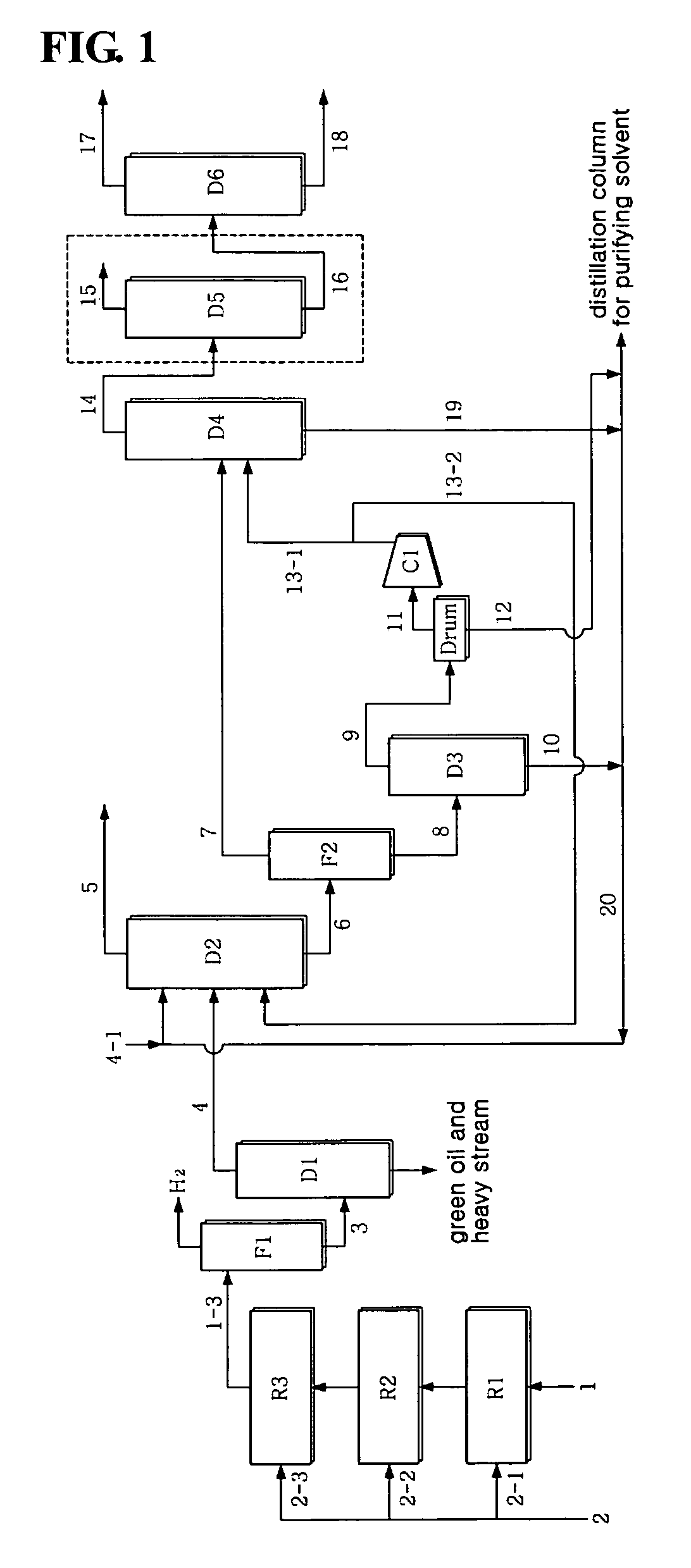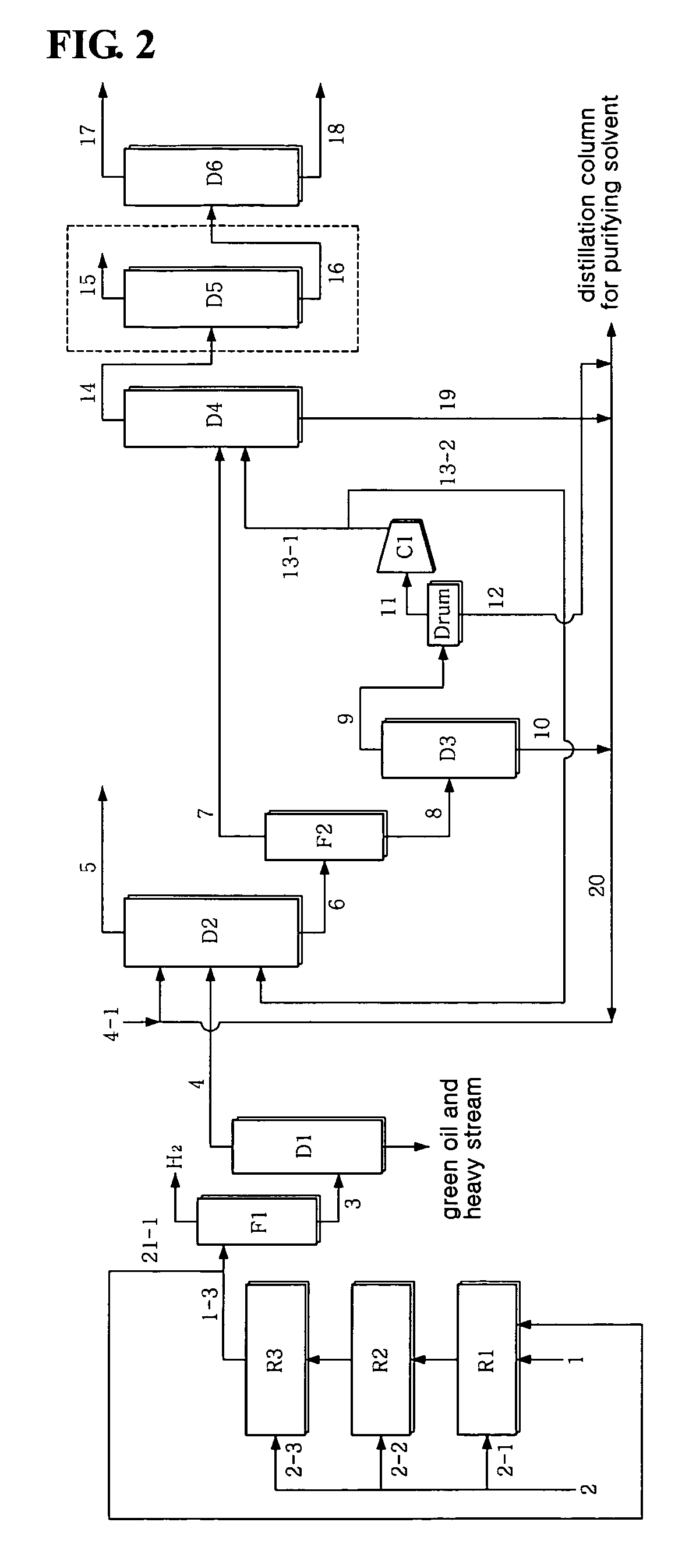Process for 1,3-butadiene separation from a crude C4 stream with acetylene converter
a technology of acetylene converter and c4 stream, which is applied in the direction of liquid gas reaction process, organic chemistry, hydrocarbon oil treatment products, etc., can solve the problems of limiting long-term operation of beu, difficult to increase the temperature of the 1,3-butadiene recovery column, and the 3-butadiene recovery in the overall process, so as to reduce the degree of utility and stream loss, the effect of reducing the number of units necessary for the process and reducing the time of impur
- Summary
- Abstract
- Description
- Claims
- Application Information
AI Technical Summary
Benefits of technology
Problems solved by technology
Method used
Image
Examples
example 1
Acetylene Conversion
[0059]Using a crude C4 stream having the composition of Table 3 below, a pilot test was conducted. The pilot reactor had a diameter of 6 cm and a length of 120 cm and the amount of catalyst in each reactor was 900 cc, and the flow rate was 9 L / hr, and three reactors were continuously connected without a recirculation procedure. As an acetylene hydrogenation catalyst, a commercial catalyst G-68SK, available from Süd-Chemie Catalysts Japan, Inc., was used. Further, internal condensers were provided between the reactors, so that the temperature of the stream to be introduced into the reactors was constant. As shown in Table 1, the crude C4 stream 1 contained about 44˜50 wt % 1,3-butadiene and 1.2˜2 wt % acetylene. The temperature of the feed of each reactor was about 40˜50° C., and the pressure thereof was 30˜31 bar. The LHSV in each reactor was 10 hr−1, and hydrogen was sequentially introduced into three reactors at a rate of 34.6, 30.8, and 11.5 NL / hr, correspondi...
example 2
[0065]1,3-butadiene was separated at high purity in the same manner as in Example 1, with the exception that, as seen in FIG. 2, part 21-1 of the stream 1-3 of the third reactor R3 was introduced in the same amount as the crude C4 stream 1 into the first reactor along with the crude C4 stream 1. This is advantageous in that the concentration of vinylacetylene of the stream introduced into the first reactor R1 is decreased to half that of the case without a recirculation procedure, thus increasing the activity stability and selectivity of the catalyst. The LHSV in each reactor was 20 hr−1.
[0066]The stream containing 42 wt ppm vinylacetylene resulted from the acetylene conversion process, and, through the subsequent extraction process, 99.6 wt % of 1,3-butadiene containing 11 wt ppm vinylacetylene was recovered to 98.9 wt % or more (in consideration of the loss of reactor, 97.9 wt %). Without the manipulation of the process parameter of the extraction process, 1,3-butadiene was recove...
example 3
[0069]1,3-butadiene was separated at high purity in the same manner as in Example 1, with the exception that, as seen in FIG. 3, part 21-2 of the top stream of the extractive distillation column D2 was recirculated in a predetermined amount to the first reactor along with the crude C4 stream. The case in which the top stream 21-2 of the extractive distillation column D2 is recirculated is advantageous in that the initial concentration of vinylacetylene introduced into the first reactor R1 and the concentration of 1,3-butadiene are decreased to predetermined levels, thus increasing the activity stability and selectivity of the catalyst. The 46.7 wt % butadiene and 1.3 wt % vinylacetylene in the crude C4 stream 1 were decreased to 35.1 wt % butadiene and 0.99 wt % vinylacetylene, based on the total amount of the stream 1 and the stream 21-2 introduced into the reactor, in the case where 67% of the top stream 5 of the extractive distillation column D2 was used as the recirculating stre...
PUM
| Property | Measurement | Unit |
|---|---|---|
| pressure | aaaaa | aaaaa |
| temperature | aaaaa | aaaaa |
| pressure | aaaaa | aaaaa |
Abstract
Description
Claims
Application Information
 Login to View More
Login to View More - R&D
- Intellectual Property
- Life Sciences
- Materials
- Tech Scout
- Unparalleled Data Quality
- Higher Quality Content
- 60% Fewer Hallucinations
Browse by: Latest US Patents, China's latest patents, Technical Efficacy Thesaurus, Application Domain, Technology Topic, Popular Technical Reports.
© 2025 PatSnap. All rights reserved.Legal|Privacy policy|Modern Slavery Act Transparency Statement|Sitemap|About US| Contact US: help@patsnap.com



